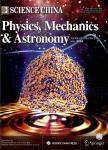Analysis of the applicability of collision probability algorithms for nonlinear relative motion
Analysis of the applicability of collision probability algorithms for nonlinear relative motion作者机构:Purple Mountain ObservatoryChinese Academy of Sciences Key Laboratory of Space Object and Debris ObservatoryPurple Mountain ObservatoryChinese Academy of Sciences
出 版 物:《Science China(Physics,Mechanics & Astronomy)》 (中国科学:物理学、力学、天文学(英文版))
年 卷 期:2013年第56卷第5期
页 面:1041-1046页
核心收录:
学科分类:08[工学] 080101[工学-一般力学与力学基础] 0801[工学-力学(可授工学、理学学位)]
基 金:supported by the National Natural Science Foundation of China (Grant No. 11203085)
主 题:space debris collision probability nonlinear relative motion integral limits
摘 要:In the calculation of the collision probability between space objects, the assumption of linear relative motion is generally adopted to simplify the problem because most encounters are at high relative velocity. Nevertheless, the assumption is no longer valid for encounters at extremely low velocities, and a new algorithm is urgently needed for computing collision probability for space objects having nonlinear relative motion. In this particular case, the direction associated with relative velocity is reintroduced for integration. The different integral limits would lead to the variations of probability and integral time. Moreover, the application scope of this new algorithm is also presented. Since the nonlinear effect is only significant in some certain situations, the new algorithm needs to be considered only in such certain situations. More specifically, when space objects in circular orbits encounter with a tiny inclined angle (the extreme situation), the new algorithm can derive much more accurate collision probability than the linear method, that is to say, the linearity assumption involved in general collision probability formulation is not adequate anymore. In addition, the deviation of the probability derived by the linear method (linear collision probability) from that derived by the nonlinear method (nonlinear collision probability) also weakly depends on the relative distance and combined covariance, and essentially depends on their ratio.



